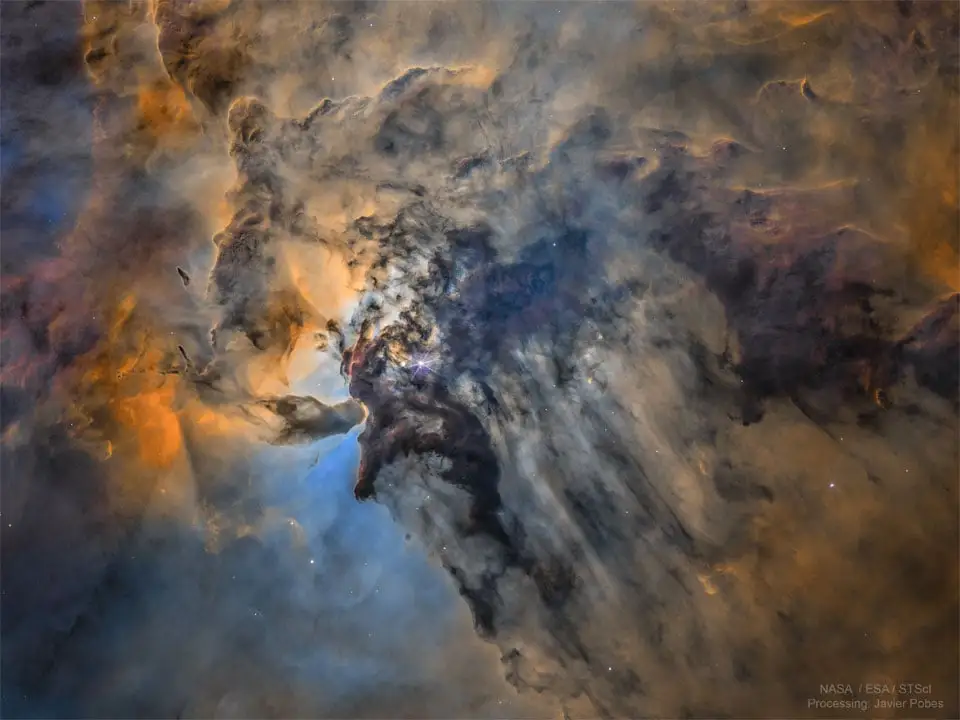Black hole jets, which spew near-light-speed particle beams, can trigger nearby white dwarf stars to explode by igniting hydrogen layers on their surfaces. "We don't know what's going on, but it's just a very exciting finding," said Alec Lessing, an astrophysicist at Stanford University and lead author of a new study describing the phenomenon, in an ESA release. Gizmodo reports:
In the recent work -- set to publish in The Astrophysical Journal and is currently hosted on the preprint server arXiv -- the team studied 135 novae in the galaxy M87, which hosts a supermassive black hole of the same name at its core. M87 is 6.5 billion times the mass of the Sun and was the first black hole to be directly imaged, in work done in 2019 by the Event Horizon Telescope Collaboration. The team found twice as many novae erupting near M87's 3,000 light-year-long plasma jet than elsewhere in the galaxy. The Hubble Space Telescope also directly imaged M87's jet, which you can see below in luminous blue detail. Though it looks fairly calm in the image, the distance deceives you: this is a long tendril of superheated, near-light speed particles, somehow triggering stars to erupt.
Though previous researchers had suggested there was more activity in the jet's vicinity, new observations with Hubble's wider-view cameras revealed more of the novae brightening -- indicating they were blowing hydrogen up off their surface layers. "There's something that the jet is doing to the star systems that wander into the surrounding neighborhood. Maybe the jet somehow snowplows hydrogen fuel onto the white dwarfs, causing them to erupt more frequently," Lessing said in the release. "But it's not clear that it's a physical pushing. It could be the effect of the pressure of the light emanating from the jet. When you deliver hydrogen faster, you get eruptions faster." The new Hubble images of M87 are also the deepest yet taken, thanks to the newer cameras on Hubble. Though the team wrote in the paper that there's between a 0.1% to 1% chance that their observations can be chalked up to randomness, most signs point to the jet somehow catalyzing the stellar eruptions.

Black hole behavior has largely been theoretically explored. What's neat with this discovery is that the particle jets interact with stars causing a Nova - this means that there is a way to measure black holes we have a harder time observing and use that in calculating mass of galaxies. This is important if black holes do contribute to what we consider Dark Matter.
Dark Matter is simply something with mass (therefore matter) that does not interact with electromagnetism. It doesn't absorb light, it doesn't emit light. Therefore "dark" and extremely hard to study. We know it exists because it does interact with gravity.
Undetectable black holes can contribute to this measured mass, and are great candidates for some of the dark matter. The problem remains that the dark matter interactions are not exclusively resolved by black holes passing through an area of space.
More accurately, we believe with high probability that it exists because our observations show that the rotation of stars in galaxies don't behave consistently with the amount of visible matter we can see, assuming that we've correctly calculated the universal gravitational constant (from observations of the solar system), that it's actually a universal constant, and that general relativity is correct.
Maybe there's another explanation. But dark matter fits really, really well with the rest of our observations, without breaking everything else we believe we know.
This was my understanding as well, it makes the math make sense but we haven't actually "proven" it, it's possible we're misunderstanding some fundamental aspect of physics but given all the evidence this is what makes sense.